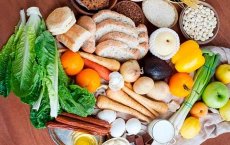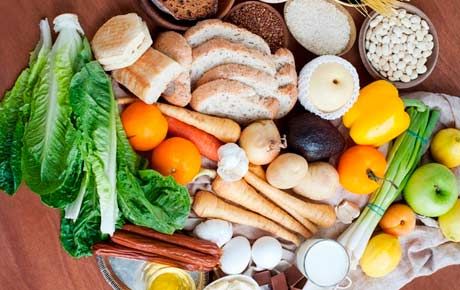At a high blood pressure
Last reviewed: 23.04.2024

All iLive content is medically reviewed or fact checked to ensure as much factual accuracy as possible.
We have strict sourcing guidelines and only link to reputable media sites, academic research institutions and, whenever possible, medically peer reviewed studies. Note that the numbers in parentheses ([1], [2], etc.) are clickable links to these studies.
If you feel that any of our content is inaccurate, out-of-date, or otherwise questionable, please select it and press Ctrl + Enter.

Diet under high blood pressure is the right decision to normalize the condition, both in adults and in children. Let's look at ways to reduce pressure, dietary rules and diet for people with high blood pressure.
In an adult, the normal pressure is 120 to 80. Elevated, the pressure is considered when the upper, that is, systolic blood pressure is 140, and the lower one is diastolic 90. Elevated pressure is a real test for the body, it is a constant risk. According to medical statistics, the death rate of people with high blood pressure is very high. High blood pressure is the cause of diseases of the cardiovascular system. Increased pressure acts as a provoking factor for various ailments and permanent migraines.

Increased pressure is called hypertension, and most often it appears against the background of excess weight. There is a theory according to which, every extra kilogram of weight raises blood pressure by 1 mm Hg. The diet under increased pressure is aimed at normalizing the water-salt balance and improving the state of the organism.
Power at high pressure
Food at increased pressure should be carefully selected and most importantly - balanced. Every day, the diet should contain fats, carbohydrates and proteins. The daily caloric intake is distributed as follows: 15% protein, 55% carbohydrate and 30% fat. The number of meals should be from 5 to 7 times a day, and you need to eat at a strictly fixed time. The interval between the first and last meal should not be longer than ten hours. At the same time, it is forbidden to overeat before going to bed.
It is not superfluous to limit the intake of salt to 5-3 grams per day. This will allow faster removal of fluid from the body, without delaying it, and without causing puffiness. Another important rule of nutrition at increased pressure is compliance with the drinking regime. Avoid carbonated and sweet drinks. Every day you need to drink at least 1.5-2 liters of water. Useful will be warm drinks from green tea, chicory tea and karkade.
Sample menu at elevated pressure
Knowing the basics of proper nutrition and basic medical advice, you can make an approximate menu at increased pressure. Based on the recommended and prohibited products, we offer you an approximate diet for a week for people with hypertension.
Breakfast:
- Fresh cottage cheese.
- Tea (herbal or green).
- Cereal bread and a slice of cheese.
- Juice made from fruits or vegetables.
- Oat flakes with milk.
- Any fruit.
Snack
- Salad from vegetables or fruits.
- A cup of rose hips or tea.
- Puree from apples or pumpkins.
- A glass of mineral water or green tea.
Dinner
- Any fish and lean meat, steamed or boiled.
- Stew of vegetables or salad with vegetable oil.
- Juice from vegetables with pulp.
- Cutlet steamed with sour cream sauce.
- Boiled potatoes.
- Compote or baked fruit.
Snack
- A couple of cereal breadcrumbs.
- A cup of green tea or a tea drink carcade.
- Any fruit.
- Cottage cheese or a slice of curd casserole.
Dinner
- Yogurt or a glass of yogurt.
- A fresh vegetable salad.
- Oatmeal porridge.
- Vegetable cutlets for a couple.
- A cup of green tea.
Snack (before bedtime)
- A glass of yogurt or milk
- Apple or half a grapefruit
The diet under increased pressure should be based on fruits and vegetables, preferably without heat treatment. Useful fish dishes, low-fat (diet) meat (boiled). Dairy products and foods that contain a lot of protein. It is strictly forbidden to sit on low-calorie diets and to starve, it is also necessary to comply with the drinking regime. Observance of all these rules allows to normalize the raised pressure.
What foods can I eat at increased pressure?
If you have hypertension, then you are probably interested in the question of what foods you can eat in order not to increase the pressure, but rather to normalize it. Let's look at the main types of products that are allowed and recommended for people with high blood pressure:
- Dry bread, dried bread from first and second grade flour.
- Fresh vegetables and salads from them, seafood, fish, meat (boiled).
- Soups without frying with porridge, milk porridge and soups, fruit first dishes.
- Fresh vegetables in any quantity, caviar aubergine or squash.
- Porridge (buckwheat, barley), boiled pasta, dumplings.
- Any dishes from eggs (a day it is recommended to eat no more than two eggs).
- Sour-milk products, cottage cheese, cream, yoghurt, sour cream, kefir, butter.
- Chicken meat, rabbit meat, turkey, veal (only cooked).
- Dill, parsley and such spices as cinnamon, vanillin, bay leaf.
- Fresh berries and fruits, compotes, jelly.
- Honey, jam.
- Decoctions, fresh fruit juices, teas.
What foods can not be eaten at increased pressure?
When drawing up a nutrition plan for people with high blood pressure, you need to know what foods you can not eat. First of all, you need to remember that you need to eat five to seven times a day. Daily intake of calories should be at the level of 2000-2600 kcal. Proteins 100 grams, carbohydrates - 300-400 grams and fats - 50-100 grams. Let's look at products that are prohibited for use in hypertension.
- Good pastries, fresh bread, pies, rolls and any flour products.
- Salty, sharp, smoked, fried dishes.
- Soups with meat broth, mushroom soups, canned fish and meat.
- Garlic, beans, sour vegetables.
- Fatty cheeses, fatty fish, meat, fats of animal origin.
- Meat of ducks, liver, brains.
- Horseradish, mustard, mayonnaise.
- Carbonated drinks, chocolate, coffee.


 [
[